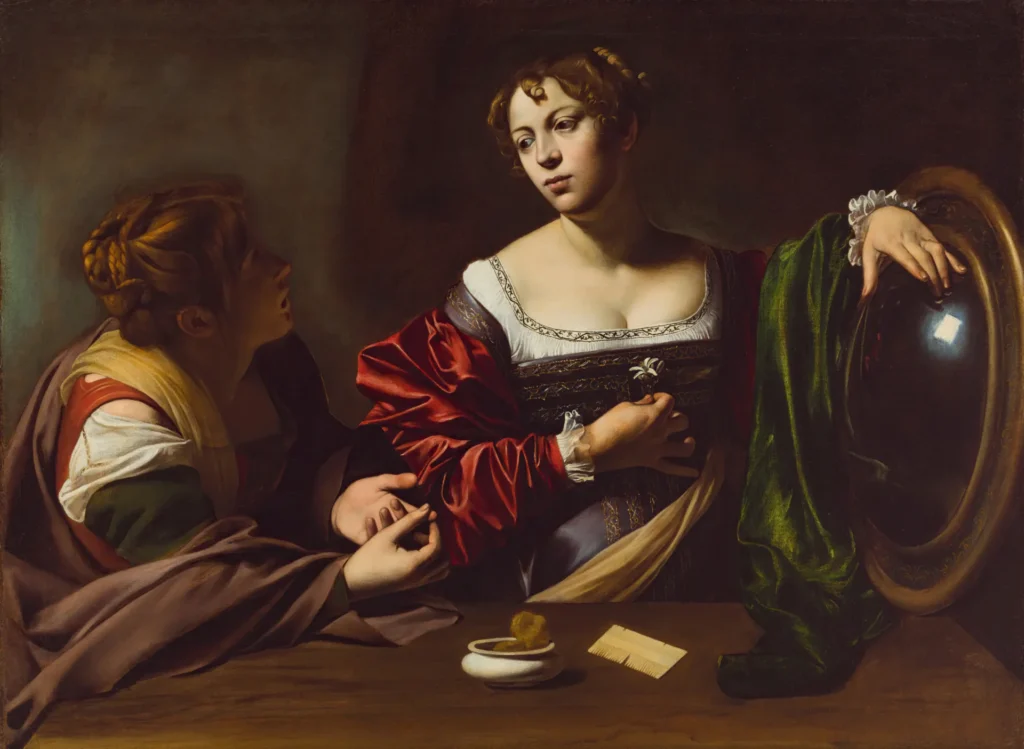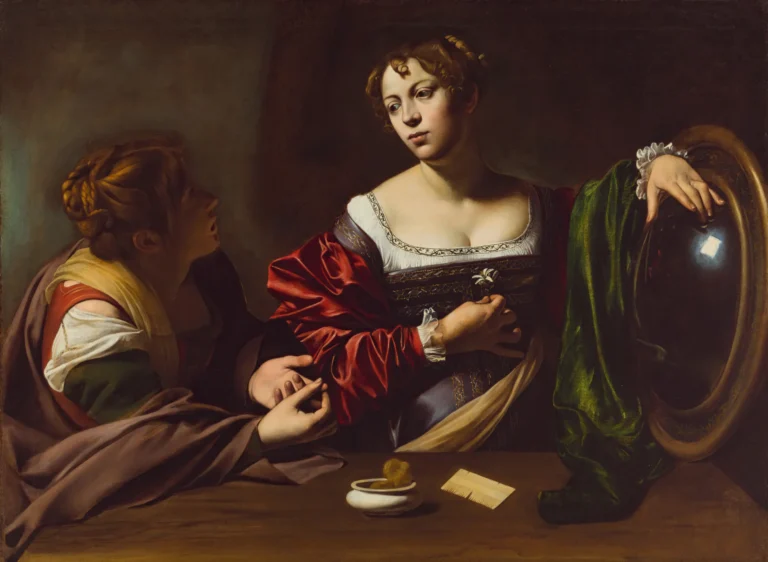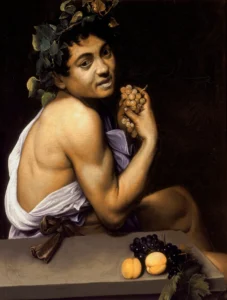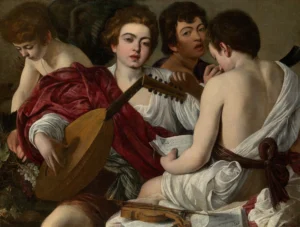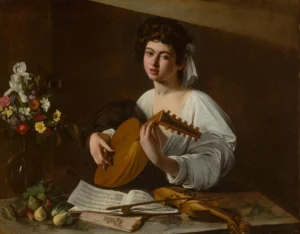Martha and Mary Magdalene (ca. 1598)
Created around 1598, Martha and Mary Magdalene by Caravaggio captures a pivotal moment between two sisters, Martha and Mary. Martha passionately urges Mary toward a life of faith within the intimate confines of her private room. Through objects symbolizing vanity and purity, and with Caravaggio's masterful use of chiaroscuro lighting, this artwork transcends mere representation, offering a profound commentary on spiritual awakening and the intertwining of the sacred and the mundane. Its significant composition reflects the Baroque period's depth and emotional intensity.
Year 1598
About the Artwork
The painting depicts Martha, the sister of Mary Magdalene, compelling her sibling to embrace faith over vanity. Set in Mary's personal space, the inclusion of objects like a convex mirror and cosmetic items suggests the ephemeral nature of physical allure, aligning with Counter-Reformation ideals. Notably, the convex mirror reflects no image of Mary, instead capturing the illumination of divine light, signifying her moment of potential conversion. Furthermore, the model for Mary was Fillide Melandroni, a courtesan, resulting in a striking contrast between the sacred figure and her real-life counterpart, adding layers of complexity to the narrative. This piece illustrates Caravaggio's innovative techniques, encapsulating emotional depth while navigating theological tenets prevalent during its creation.
Did You Know
The figure of Mary Magdalene is believed to have been modeled after Fillide Melandroni, a famous Roman courtesan, adding a layer of intrigue to the painting by contrasting her earthly existence with spiritual aspirations.
The convex mirror in the painting serves dual purposes: it signifies vanity and reflects the divine light instead of Mary’s image, suggesting a moment of conversion and self-realization.
This painting exemplifies the Counter-Reformation’s emphasis on portraying biblical figures as relatable individuals, focusing on their human experiences without the typical halos or divine embellishments.




